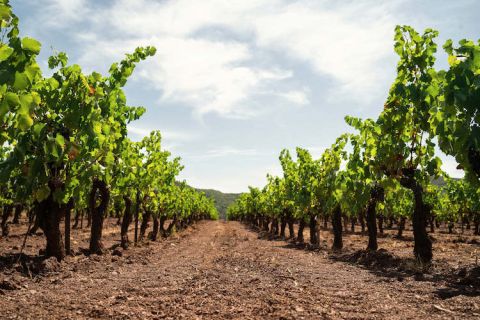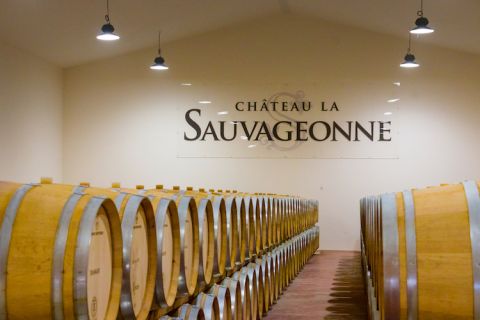2016 from €19.90, £20.55, 5,210 Japanese yen
2015 from €20.70, $41.36, £19.19, 31.90 Swiss francs, 4,340 Japanese yen, 4,278 roubles
Gérard Bertrand, rugby player and son of a local wine merchant, is a big cheese in the Languedoc. He makes a lot of wine and has taken admirable steps to convert his top domaines to biodynamics. Read more in this account of his autobiography.
I recently tasted the latest releases from his top domaines (see A small Languedoc collection for my tasting notes). I wasn’t mad about all of them; some seemed a little too ripe and – dare I say it? – internationally styled. But I loved this red blend La Sauvageonne Gérard Bertrand Grand Vin 2016 Terrasses du Larzac from his property on the western fringes of the windswept Larzac plateau, which is high enough for nights to be seriously cool. (I was rather impressed by the 2018 rosé from the same property, too.) Of these Gérard Bertrand single-estate 2016 reds, La Sauvageonne was by far the freshest, but it also tasted beautifully well-integrated.
The alcohol given on the label is a massive 15.5%, which may well be seriously off-putting for many, but please believe me when I say that when you taste this satisfying wine, with its notes of leather and liquorice, you really don’t notice. It’s a good example of what seems to me to be a recent phenomenon: wine producers managing to make high-alcohol wines without excessive heat on the finish. It’s something that we at JancisRobinson.com are currently exploring.
Nick and I enjoyed the remains of the bottle I tasted over two or three days, and each time both of us were hugely impressed. I’d guess it will drink well over at least the next five years; fine Languedoc reds have considerable ageing capacity. I was hesitating between 16.5 and 17 for the score.
Bertrand bought this property in 2011 from Yorkshireman Fred Brown, who took it over from Gaetan Poncé, who, Bertrand said in an email, was ‘the first to reveal the potential of this estate. I fell in love with the natural beauty and biodiversity around Ch La Sauvageonne and bought the estate from Mr Brown. He had already begun an extensive replanting and renovation programme, with the construction of a villa over the vineyards at the top of a huge schist hillside (pictured above by Soufiane Zaidi). We renovated the cellars and converted the vineyard to biodynamic practices. We are convinced that it is the best way to bring out the typical and exceptional character of the terroir. The estate has been Demeter-certified since 2015.’
La Sauvageonne is at 200 to 400 m (655–1,310 ft) in the foothills of the Cévennes with both volcanic and schist soils, which makes it very different from the other, much lower-lying, estates in the group. Its isolation, extremely healthy vines and natural biodiversity made it particularly easy to convert to biodynamics, apparently. And you can see the typical poverty of the soils in the picture by Soufiane Zaidi below.
The 2016 vintage was, as in much of France, notably successful. A sunny, late-ripening season was marked by significant drought with the lack of rain throughout the year compounded by evaporation caused by hot, windy conditions with practically no precipitation from mid June onwards (which presumably explains the high alcohol level). A few days of rain in September relieved the vines of severe water stress though, and fortunately kick-started the phenolic ripening process again.
The blend in 2016 was 55% Grenache, 35% Syrah, 7% Mourvèdre and just 3% Carignan, each variety being individually sorted, destemmed and aged for 12 months in French oak barrels, of which half were new, in the chai below pictured by Gilles Deschamps, before the blend was determined. Bertrand designates all his top single-estate cuvées Grand Vin on the label.
But even though this is a seriously good, approachable but ageworthy wine by any measure, it is not a silly price at all.
The 2016 is widely available in France, from several stockists in the UK, and in Japan. North American retailers still seem to be on the 2015, according to Wine-Searcher.com, which is no great disadvantage according to Richard, who gave it this very positive note and a score of 16.5+. Richard gave it a drinking window up to 2023. The 2015 is available from many stockists in the US and UK, France, Switzerland and Russia.
But be careful to distinguish the red from the rosé La Sauvageonne on Wine-Searcher.com.
















